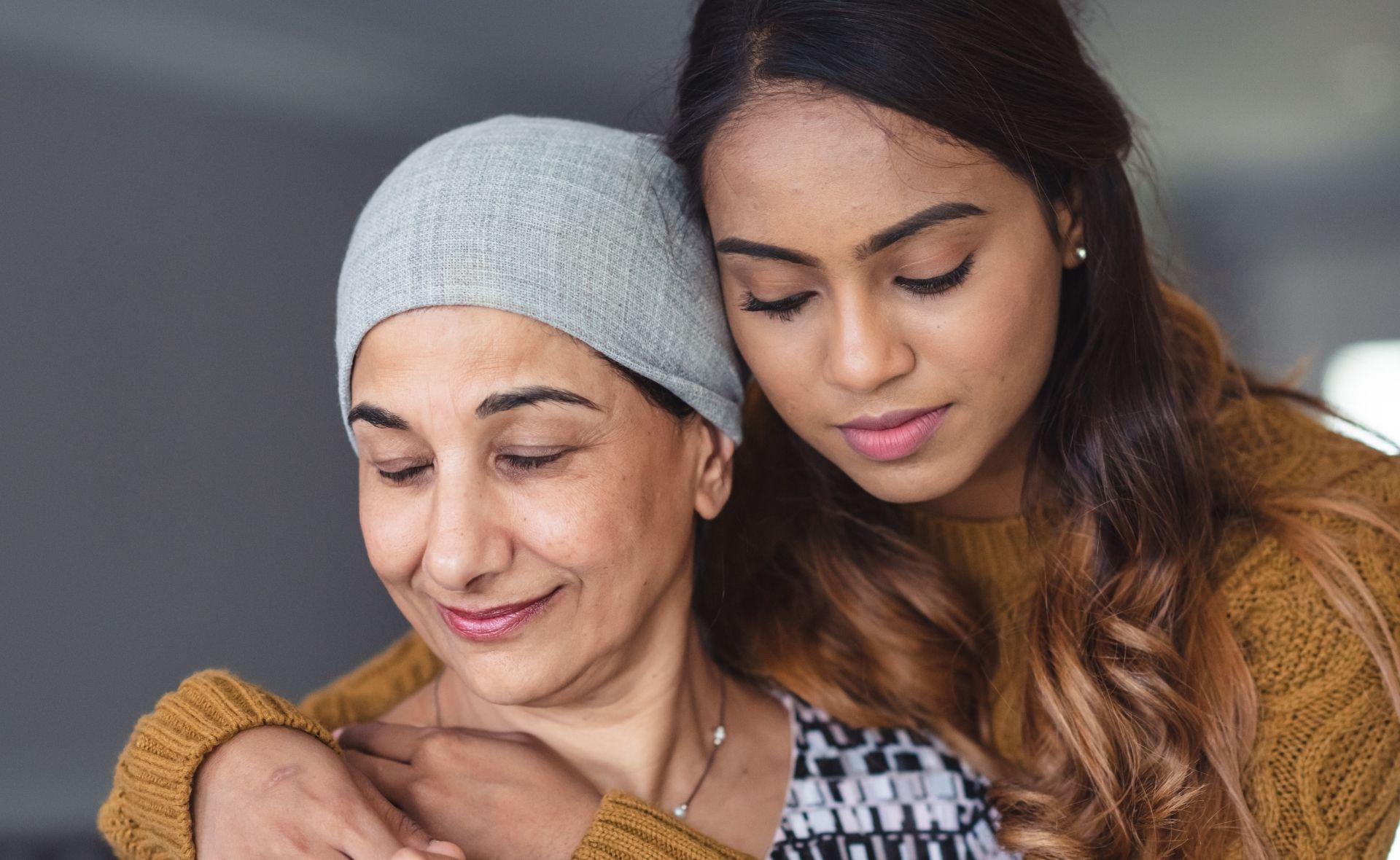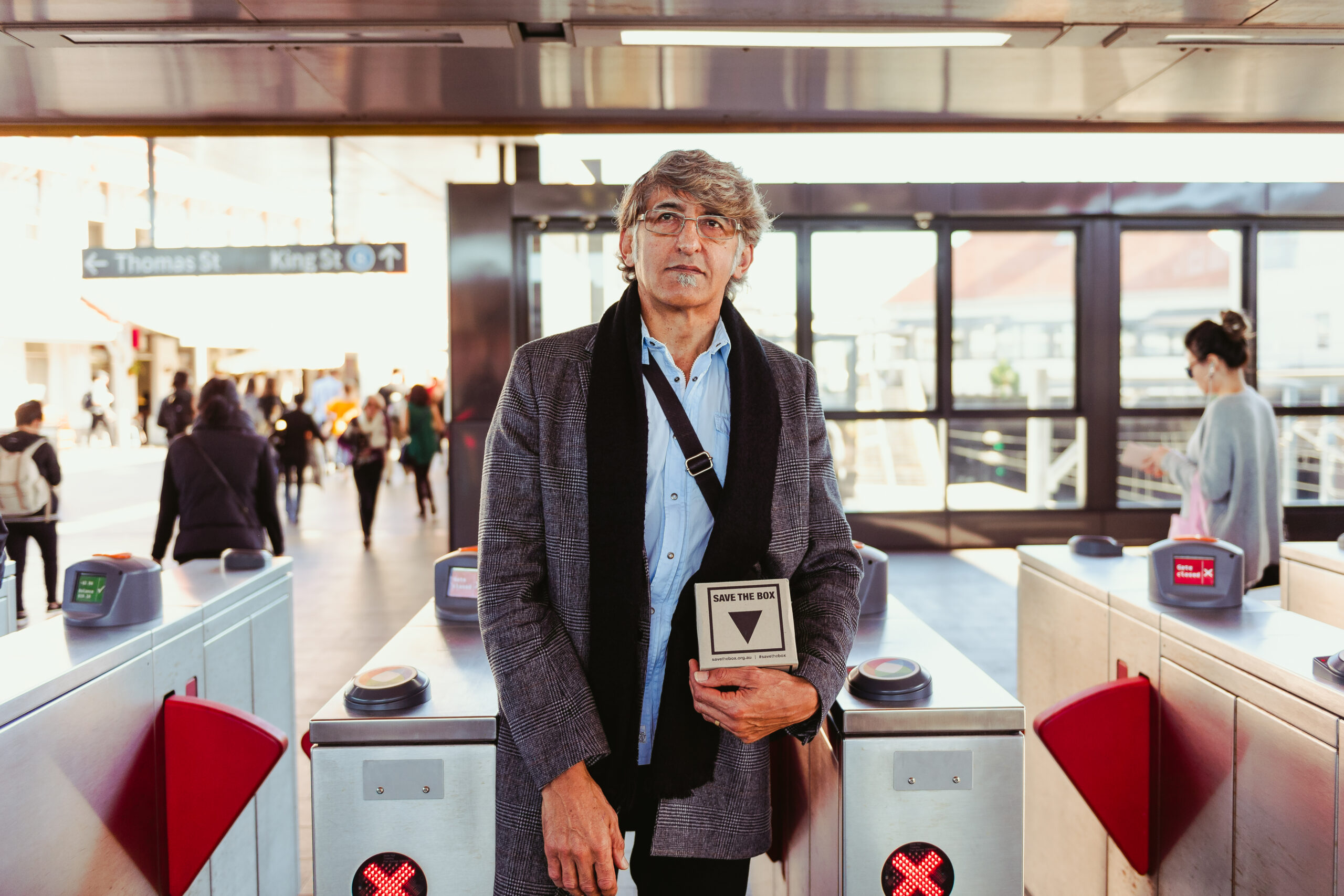For many people diagnosed with cancer, the symptoms are obvious. Bumps, lumps and blood where it shouldn’t be are all clear-cut warning signs that something could be wrong.
But for Narell Whitehead, a chance encounter with a TV ad was the difference between life and death.
Narell, then 31, had been experiencing a range of subtle and indeterminate symptoms for a while — some bloating, frequent bathroom breaks, a recurring urinary tract infection — things she put down to just being a woman, or being run down.
But the ad — a 2009 run of an ovarian cancer awareness campaign — changed her life.
“They ticked off all of these symptoms, and it said, ‘They’re very mild, but by the time 75% of women realise what the symptoms are, they’re too advanced.’ And they went through that list and I thought, ‘My god, I’ve got all of that.'”
“Not knowing ovarian cancer actually can’t be detected by a pap smear, I immediately went to get one and my results were clear. But the doctor luckily noticed that I had a bit of bleeding,” says Narell.
“And that’s when they sent me to the core biopsy with the gynaecologist and that’s when it all came out. Yes, it was cancer… When my gynaecologist told me over the phone, I just remember there was ringing in my ears. I couldn’t hear what he was saying. He said, ‘Yes, it’s cancer,’ and I just went blank.”
Even though doctors were able to get a rough diagnosis of the situation, they didn’t realise the extent of how far the disease had spread until Narell was — terrifyingly — open on the operating table.
“Their PET scans and their ultrasounds didn’t pick up anything — they only found out what was going on when they opened me up to do the radical hysterectomy. That’s when they said both ovaries had tumours on them.
The precise extent of the cancer was severe. “They said it was on my ovaries, it had spread down to my womb, down to the cervix, it was in my lymphnodes… They said within six months I would have been dead.”
Narell in hospital.
(Image: Supplied)But they do say every dark cloud comes with a silver lining. During the midst of her terrifying ordeal, and just weeks after having a radical hysterectomy which removed her uterus and ovaries, Narell stumbled into an unlikely love story.
“I went in; I had the radical hysterectomy and five weeks after that I met my husband,” says Narell. “I wasn’t looking for anything — it just happened. They didn’t have a cancer centre in Nowra, so I had to travel to a Woollongong hospital, which is an hour and a bit each way, every single day for radiation. And he had a house up there, and I stayed there when I wasn’t feeling well.
“It was a big love story that I probably wouldn’t have gotten into, except I thought, ‘Well, you’re probably going to die, so let’s do the opposite of what you’ve always done and go on a date with this guy.’ And we got engaged a week after that! We went on a date on Friday night, and I went back on the Monday night and never left. It was the opposite of everything I’ve ever done.
“We’ve been together almost nine years, and he came along packaged with a two-year-old. So I got the child I couldn’t have, and he was there to support me though post-surgery, chemotherapy and radiotherapy.”
In the midst of her whirlwind romance, Narell also had to undergo chemotherapy and radiation, post-surgery.
“I had radiation and chemo for six weeks. Radiation was every morning… I’m the one in ten thousand. Heaps of people go through this and have no issue — I had a complication for everything. I was terribly sick throughout the whole process… Radiation, what people don’t realise (and what I didn’t know) is that it damages your bowel and your stomach — radiation causes irreparable damage and scar tissue. I had a lot of issues with that and lost a lot of weight. And with the chemo once again, I was sick as sick could be.”
“The chemo wiped out my entire immune system so I was calcium-deficient, iron-deficient, immune-deficient and that led to a lot of sickness,” says Narell. “But I got through it. I was back to work as a strata manager straight away. I had no choice.
After finishing her treatment, Narell got married, bought a beautiful farm out in the country, and went about resuming her life. Keeping up with the regular appointments and check-ups, everything was smooth-sailing — until her five-year appointment, when things went south once again.
Narell on her wedding day.
(Image: Supplied)“I had all of that and thought, ‘I’m finally over all of this,’ and then… on my five year appointment, I went back. I thought, ‘This is great, I’m going to get through this appointment and they are not going to see me again. I am out of here. I made it to five years.’
“And then they found another growth.”
This was a horrifying, but statistically expected outcome — new research has found that 70 per cent of ovarian cancer survivors will experience a recurrence of the disease at one point.
On her scan, Narell’s doctors found that cancer cells from her now-removed ovaries had attached to her bowel wall.
“I thought ‘Surviving it once, yes… twice? I don’t know about that.’ The odds were against me. Even though I didn’t have any ovaries, some cells had survived along the way and had attached to my bowel wall, so it I had to have a full bowel resection.
“I had complications from that, of course. One in three people will wake up [from bowel surgery] and they’ll have an ileostomy bag, and I woke up and the doctor said, ‘Good news! I reattached your bowel, but you’ll have to have this ileostomy bag.’ I just about died. It was the worst thing you could say to a young woman. I had that terrible bag for four months.
But along with being uncomfortable and awkward, Narell suffered severe pain while she had the ileostomy bag.
“The constant pain, I couldn’t walk… it was a nightmare. It just puts a damper on everything. You don’t feel like a woman, you feel like there’s something wrong with you. I handled it, but I had to handle it. But there was no other way for me to do it, I had to keep going, keeping putting one foot in front of the other.
“Once I got through that — once again, massive complications, couldn’t eat, couldn’t drink, I went down to about 46 kgs — I still have ongoing issues, and I will forever.
“I have ongoing blood tests, gynaecological examinations, and I have a CT scan every year to check that there’s no more tumour growth. Every time I go in, you think, ‘Oh god, I hope they don’t find anything.’ You look at their faces to see if they’ve seen something. You’re constantly thinking, ‘What if they find something?’ Because my chances of survival for a third time are not going to be good. I was lucky to get through it twice.
“It’s a constant worry; it’s in the back of your mind. It’s a really deadly cancer, and it doesn’t discriminate. I always thought, ‘I have no ovaries now, there’s no way I can get it back again.’ But you can.”
The loss of her fertility weighed heavily on Narell, too. Following her radical hysterectomy, Narell struggled with the thought that she’d never be able to carry children of her own.
“The main thing that affected me is not being able to have a baby. I struggled with that for a long time. Even after the hysterectomy-induced menopause, I still yearned for a baby,” confides Narell.
“I hadn’t had any children [when I was first diagnosed]. I’d gone and done the career and started paying off the house. I missed that boat completely. I thought I was doing everything right, but I had missed the boat completely. That hit me hard. To have that decision taken out of your hands was a shock.
“But I was more concerned about dying I thought ‘I gotta get through this. It’s going to take these things away from me but I’m going to get to live’,” says Narell. “I still have that urge and that desire to have a baby. I’m working on my step-son having six children and leaving a couple with me!”

Narell, her husband Jason, and their son.
(Image: Supplied)Going forward, Narell is passionate about educating other women about ovarian cancer, and helping the community to better recognise the symptoms as a whole.
“I had no idea what it was. I had no idea there was no test. I had no idea that it had the lowest survival rate. I learnt by someone putting a TV ad out and ticking off the symptoms.
“People say, ‘Why is there so much awareness for breast cancer but not for ovarian cancer?’ It’s because there’s not enough survivors alive to spread awareness. We don’t have a great rate of survival. That’s why.”
Diagnosis, Narell notes, can be tricky. Without a clear indication of what’s wrong, discovering the cancer before it’s too late is a dangerous business. And some of the signs are so subtle, women explain them anyway until it’s too late.
“The ultrasounds don’t always work. The PET scan didn’t pick up the extent of my tumour. It’s still hit and miss. You just ignore the symptoms… You think it’s part of being a women so you just ignore them.”
“I just want to get the awareness out there. Get women to stop and have a look. Do you have any of these symptoms? Talk about it with your friends. Speak to other women. If they’re saying they’ve got bloating, bleeding, tell them to have a look. Get a test, pay attention to your body.
“If I can get one person to have a look and say ‘I’ve got these symptoms,’ then job done.”
But despite her string of bad luck, Narell has always looked on the bright side.
“I say, ‘If I’m lucky enough to get all of this, hey.. maybe I’ll win five million on Power Ball!'”
Signs and symptoms of ovarian cancer can include abdominal or pelvic pain; increased abdominal size or persistent abdominal bloating; needing to urinate often or urgently; and feeling full after eating a small amount. If you have experienced these symptoms multiple times within a period of four weeks, consider visiting a doctor.
February is Ovarian Cancer Awareness Month. You can learn more, get support and donate to research by clicking this link.

